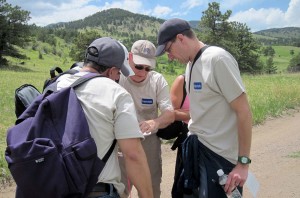 Most of us office-bound information workers would be hard-pressed to describe our jobs as adventurous or risky outside our own Walter Mitty-esque fantasies. Most of the adventure we experience would be intellectual at best and the risks we encounter are thoroughly calculated such as to prevent against failure or to simply cover our rears.
Most of us office-bound information workers would be hard-pressed to describe our jobs as adventurous or risky outside our own Walter Mitty-esque fantasies. Most of the adventure we experience would be intellectual at best and the risks we encounter are thoroughly calculated such as to prevent against failure or to simply cover our rears.
This is somewhat unfortunate, though, as it’s hard to replicate the incisive clarity that can result from adventurous, inherently risky activities. Nor are we called upon to stretch the imaginations as much as we might when something important like our safety and the safety of others is on the line. And as a team we’re challenged to trust in one another more than we might have to in a safer environment, whether we’re scaling a cliff-face or trekking across treacherous terrain, or simply making our way through a high ropes course.
As a Powerful Metaphor for Work Risks
It’s quite easy to draw parallels between taking risks in the business world and taking them during an adventure activity. Having your team in an adventure scenario involving risks will often reveal how an organization’s culture handles risks. Are people tentative and timid? Are they gung-ho with little regard for planning? A skilled facilitator can tease out these tendencies in post activity debriefings.
Learning to Function Beyond Our Comfort Zones
Adventure and risk both offer an amazing way to get us out of our regular ways of doing things. And let’s face it, often at work we’re stuck in one giant tempurpedic mattress-like comfort zone. Through risk and adventure we’re able to see what can be gained by taking strategic chances. We also learn how to trust our co-workers, as this trust is crucial to the success of the team as a whole. And just as importantly these experiences can teach us to “fail forward” when things don’t work out quite as planned. We see that the consequences aren’t so dire and that we’ve built the kind of support mechanisms needed to get back up and try again, with a smarter, more experienced perspective.
Facilitated Adventure and Risk
To get the most out of these experiences requires the guidance and wisdom of a facilitator who can easily recognize the work-patterns that manifest themselves in these scenarios. Through reflective dialogue we can challenge our preconceived notions of the possible and work through any issues negatively affecting team cohesiveness while emphasizing those areas in which a team really excels.
- Team Building Lessons – How Much Time Should We Spend Planning? - May 7, 2018
- Team Building Lessons – Do We Try a New Approach? - May 2, 2018
- Team Building Lessons - May 2, 2018
Interested in learning more about our team building and training options?
We'd love to talk to you!
Request Proposal



Leave a Reply